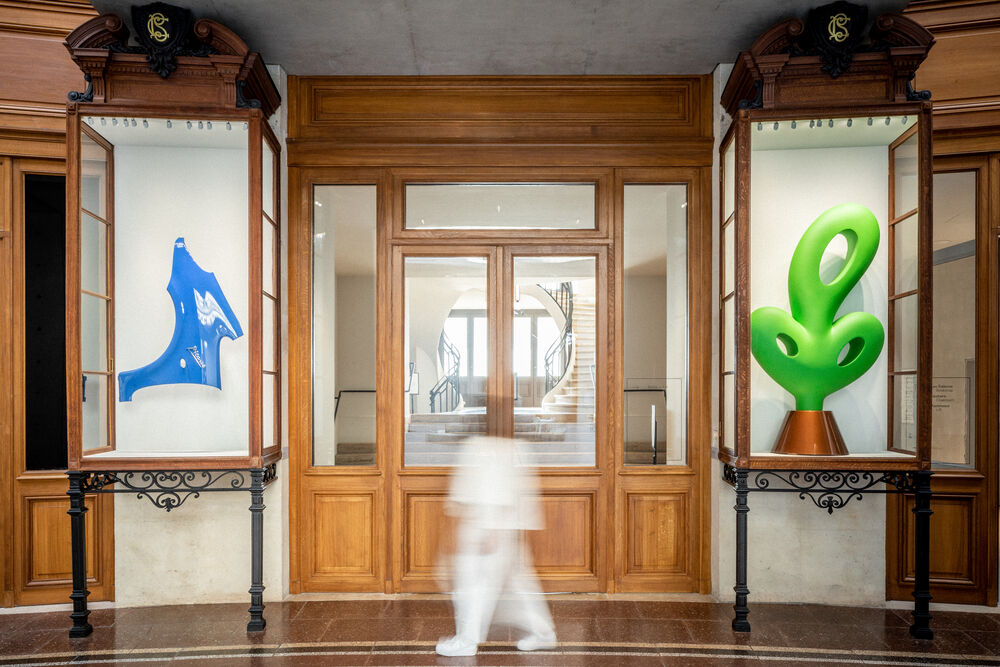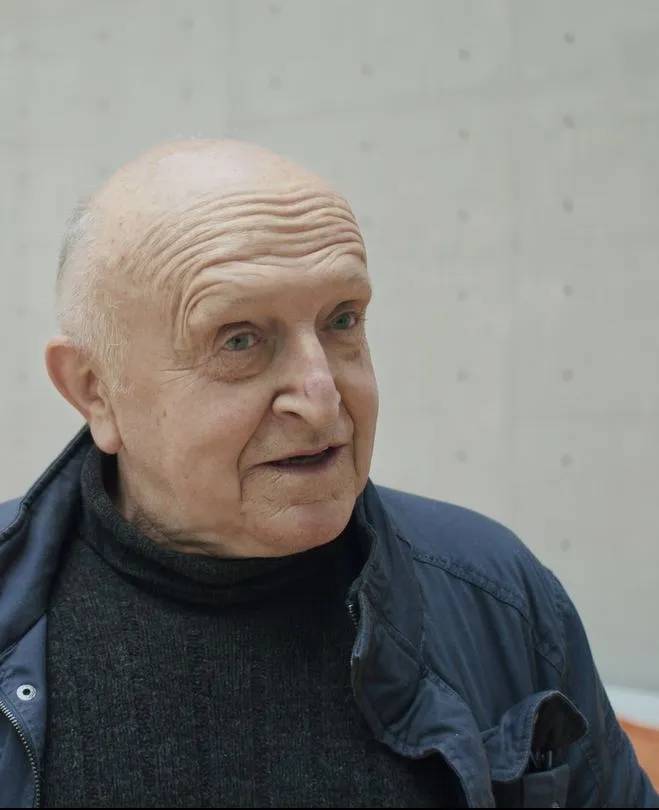Bertrand Lavier

Between the 19th and the 21st centuries, the interior façade with its impressive decor and the radical concrete structure, Bertrand Lavier orchestrated the mise en abyme of the relationship between a historic edifice and the contemporary design and content that the building offers the city. The first artist invited to invest this atypical exhibition space, Lavier proposed an original and playful “retrospective display” with distinct Duchampian undertones.
In these display cases, the artist exhibits objects and forms that he takes from both everyday life and art history, and plays with these in such a way as to question their value through the assemblage (superposition, inversion, puzzles, etc.), the use of a base, samples, etc. The functional dimension of the object is removed; it becomes a sign, matter for thought. The artist humorously reinvests prosaic and industrial objects, and processes; he explores the very nature of the work, and examines notions like the artist’s signature, painting, the original, and the artistic gesture.
Born in 1949 in Burgundy, Bertrand Lavier was destined for a career in horticulture but for the past fifty years, has instead created a body of work whose poetic motivation relies on the concepts of grafting and hybridization. The various periods of this irreverent and literate body of work, iconoclastic as much as it is iconophile, are called “construction sites”. One of his first and most important sites is “Objets peints” (Painted Objects). In the display cases of the Bourse de Commerce, we can see a wardrobe and even a fire extinguisher, covered with a layer of paint and “transformed” into art through what Lavier ironically refers to as his “Van Gogh touch”. In another of the twenty-four display cases, carefully covering the glass and split into two parts, are two shades of industrial paint (both "geranium red"). They provoke the emotion of the colour and confront the words with the image they summon, distorting reality in the process, just like the two neon lights, Blue and Red, each shining in the colour of the other. Another display case is covered with Spanish White, again in an effort to defy the status of painting, while at the bottom of one of the neighbouring cabinets, the same gesture, the same sinuous touch, is applied over the transparency of a mirror. In another, a damaged moped hangs like a massacre. Also on display, we have an object from Lavier’s “Walt Disney Productions”, green in colour with Pop forms, sitting on a pedestal; elsewhere the same cartoonish silhouette becomes a phantom through the frosted glass that shields it from admiring glances. The artist continues to play with our preconceived ideas, twenty-four times over.
